With the July 15, 1975, launch date for the historic Apollo-Soyuz Test Project (ASTP) just one week away, the astronauts and cosmonauts, in strict medical isolation, finished their training. The prime crews as well as their backups and support teams arrived at the respective launch sites in Florida and Kazakhstan. While the Saturn IB rocket for the Apollo mission had stood on its seaside launch pad for nearly four months, the Soyuz rocket rolled out to its pad just a few days before launch. Flight controllers from each country arrived at their counterpart control centers ready to support the mission.
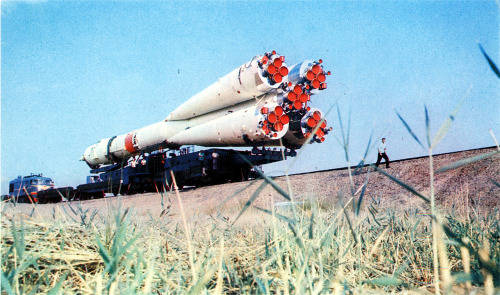
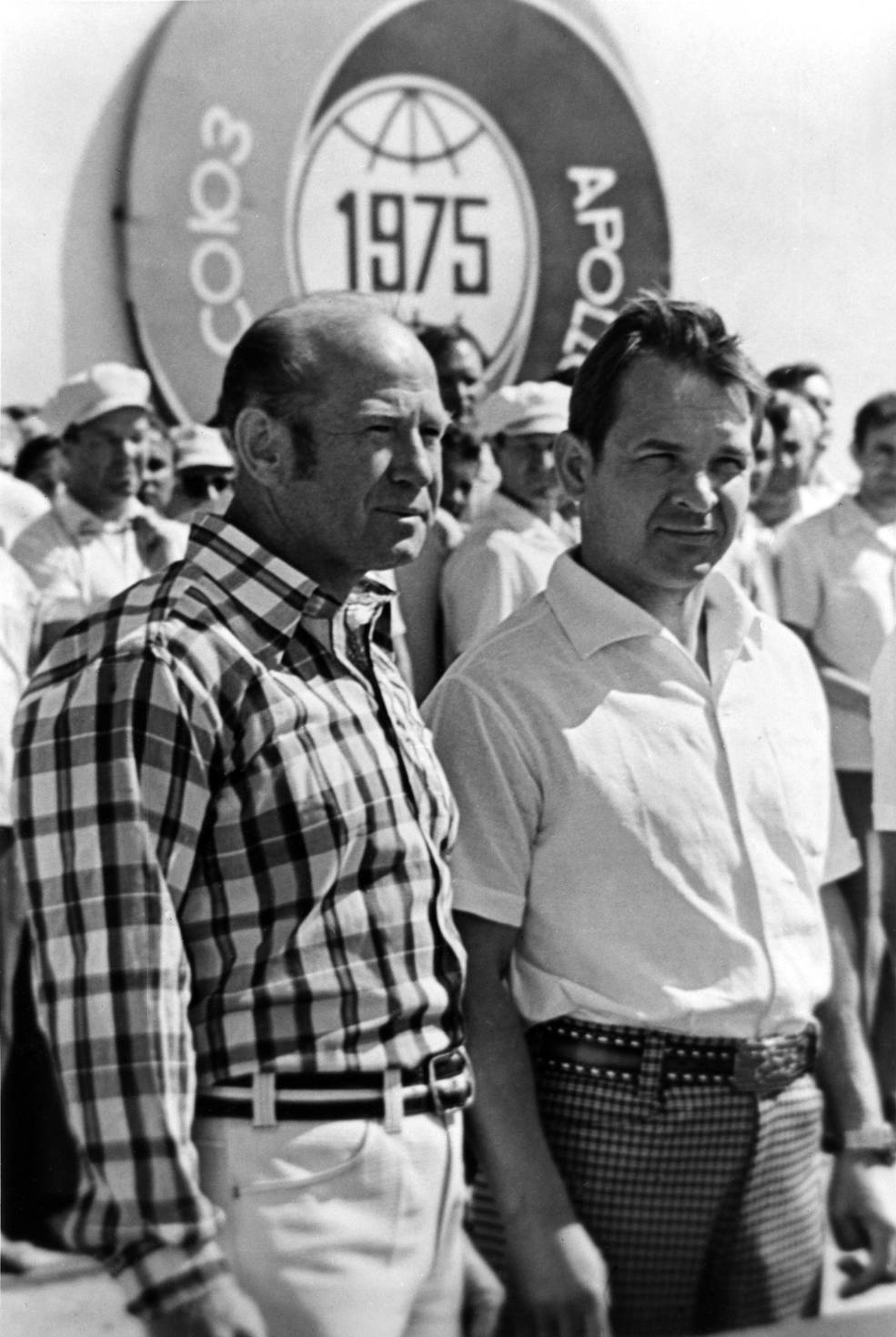
Left: ASTP Soyuz rocket rolls out to the launch pad at Baikonur. Right: ASTP Soyuz
cosmonauts Leonov (left) and Kubasov pose at the launch pad the day before launch.
At the Baikonur Cosmodrome in the Soviet republic of Kazakhstan, engineers prepared two identical rockets and spacecraft for ASTP, a prime and a backup. Should any issues arise with the prime spacecraft, the Soviets would be ready to fly the backup vehicle and not delay the mission. On July 11, workers rolled the prime rocket and spacecraft to Pad 1, known as Gagarin Start since Yuri A. Gagarin, the first human in space, took off from that facility 14 years earlier. Two days later, they rolled the backup vehicle out to Pad 31, about 12 miles away. To aid with monitoring during the mission, the Soviets deployed two tracking ships, the Akademik Sergei Korolev and the Kosmonavt Yuri Gagarin, to their stations in the Atlantic Ocean. The prime Soyuz crew of Commander Aleksei A. Leonov and Flight Engineer Valeri N. Kubasov, accompanied by their backups Anatoli V. Filipchenko and Nikolai N. Rukavishnikov and support crewmembers Yuri V. Romanenko and Aleksandr S. Ivanchenko, arrived at the Cosmodrome a few days before launch. A team of 15 Soviet specialists and interpreters arrived at Mission Control at the Johnson Space Center (JSC) in Houston on July 8 ready to support the mission.
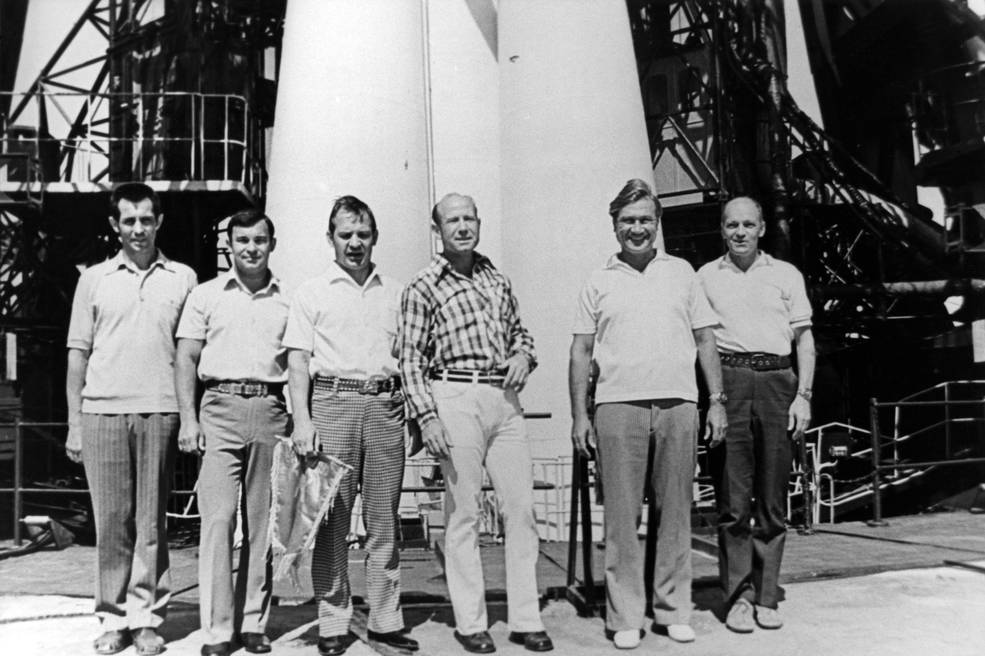
ASTP Soyuz crewmembers (left to right) Ivanchenko, Romanenko,
Kubasov, Leonov, Filipchenko, and Rukavishnikov pose at the
base of the Soyuz rocket at Baikonur.
The prime Apollo crew of Commander Thomas P. Stafford, Command Module Pilot Vance D. Brand, and Docking Module Pilot Donald K. “Deke” Slayton practiced the all-important rendezvous and docking in the spacecraft simulator at JSC. They posed near the simulator with their backups Alan L. Bean, Ronald E. Evans, and Jack R. Lousma and support crewmembers Karol J. Bobko, Robert L. Crippen, Robert F. Overmyer, and Richard H. Truly. On July 10, Stafford and Leonov held a telephone conversation and confirmed that all was ready for the mission. At the Kennedy Space Center (KSC), the countdown for the Apollo launch commenced on July 11, and two days later Stafford, Brand, and Slayton arrived at Patrick Air Force Base (AFB) near KSC. A team of 15 American flight controllers led by Flight Director Charles R. Lewis arrived in Moscow on July 12, ready to support the mission from the Soviet Flight Control Center in Kaliningrad (now Korolev), located just outside Moscow. A formal review on July 13 conducted by Apollo Program Office Manager Chester M. “Chet” Lee determined that all elements were in place and ready to support launch.
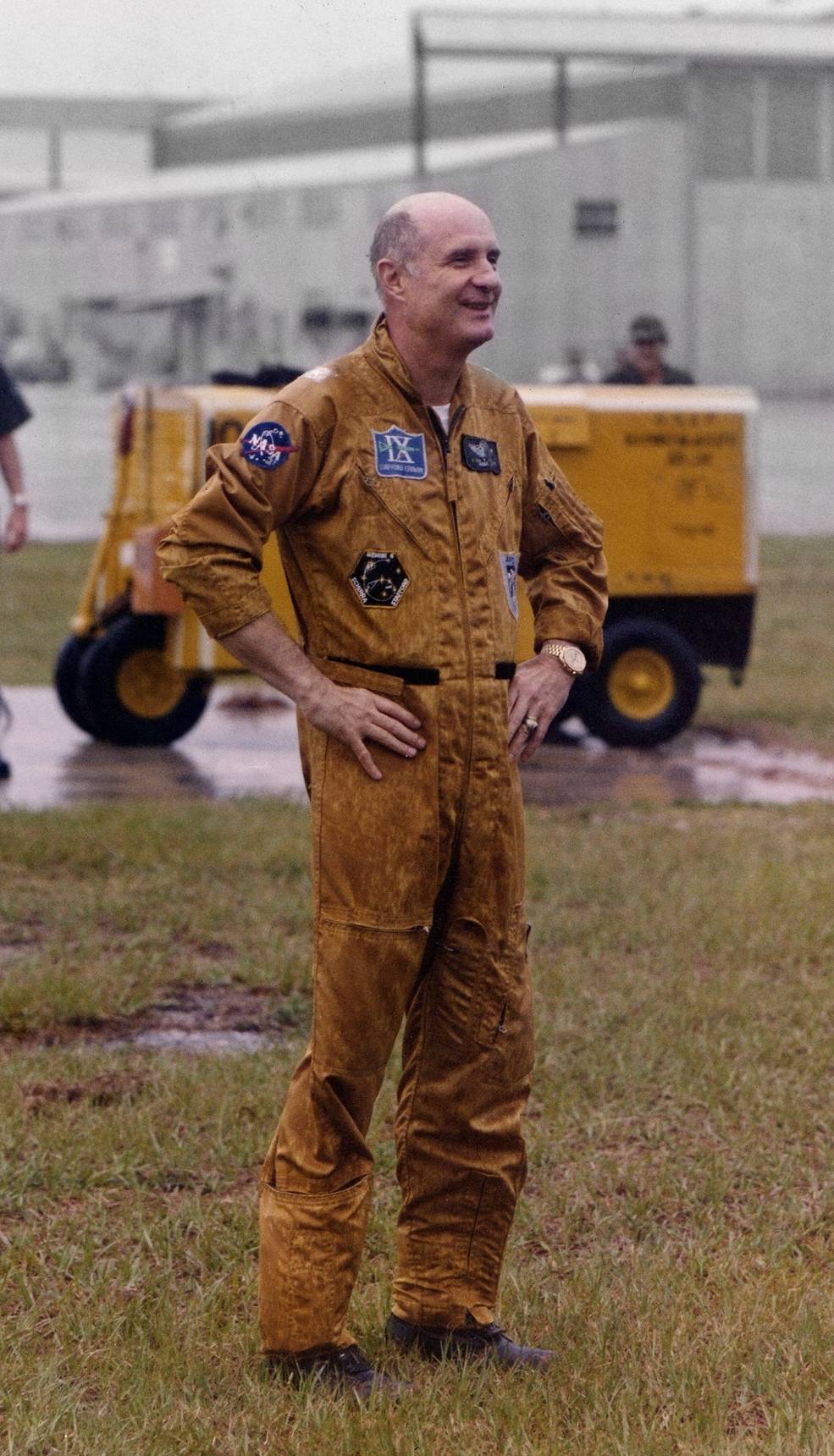
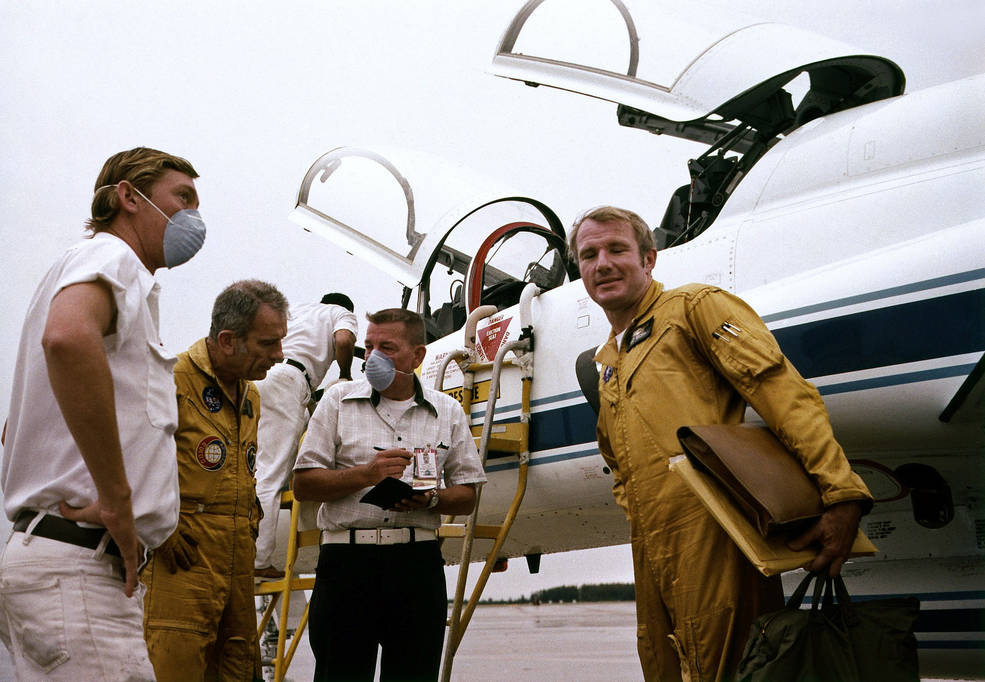
Left: Stafford after arriving at Patrick AFB near KSC.
Right: Slayton (left, in orange flight suit) and Brand (right) after
arriving at Patrick AFB near KSC.
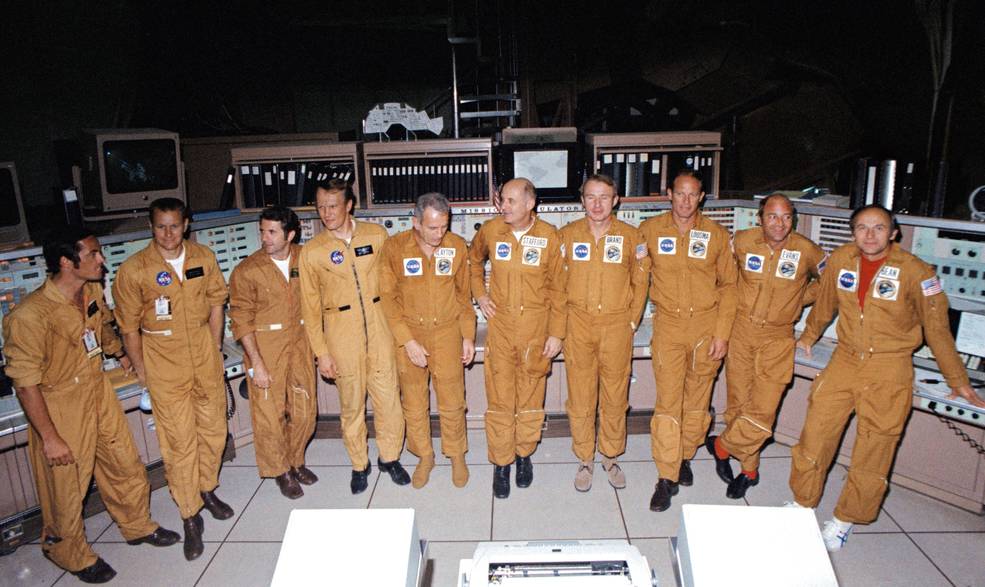
ASTP Apollo crewmembers (left to right) Crippen, Overmyer, Truly,
Bobko, Slayton, Stafford, Brand, Lousma, Evans, and Bean.
The mission plan called for Leonov and Kubasov aboard the Soyuz to launch first, and once mission controllers received word that it entered the correct orbit, the Apollo spacecraft carrying Stafford, Brand, and Slayton would lift off seven and a half hours later. Shortly after orbital insertion, the Apollo crew would perform a transposition and docking maneuver similar to what Moon-bound astronauts did, but instead of a Lunar Module (LM) tucked away in the Spacecraft LM Adapter, on this flight the Docking Module (DM) replaced the LM. After separating from the rocket’s third stage, the astronauts would turn the Command and Service Module (CSM) around, dock with the DM and extract it from the now empty stage. Two days after launch, with Apollo playing the role of the active spacecraft, the two vehicles would dock while flying over Europe. Over the next two days, several crew exchanges were planned using the DM as an airlock since the two spacecraft operated at different atmospheric pressures and compositions, with one crewmember always remaining in their “home” spacecraft. During these visits, the crew planned to exchange gifts, such as flags of each other’s countries, unite halves of medallions launched separately, conduct joint science experiments, and share meals together. One unique gift for the cosmonauts, prepared by the United States Department of Agriculture’s Forestry Service, involved a package of white spruce tree seeds in a special wooden container. The seeds, enough to plant an acre, represented a superior breed of spruce tree with fast growth capabilities to yield trees of exceptional height and shape. The mature trees would reduce pollutants in the air, filter noise, act as windbreaks and add natural beauty to the landscape.
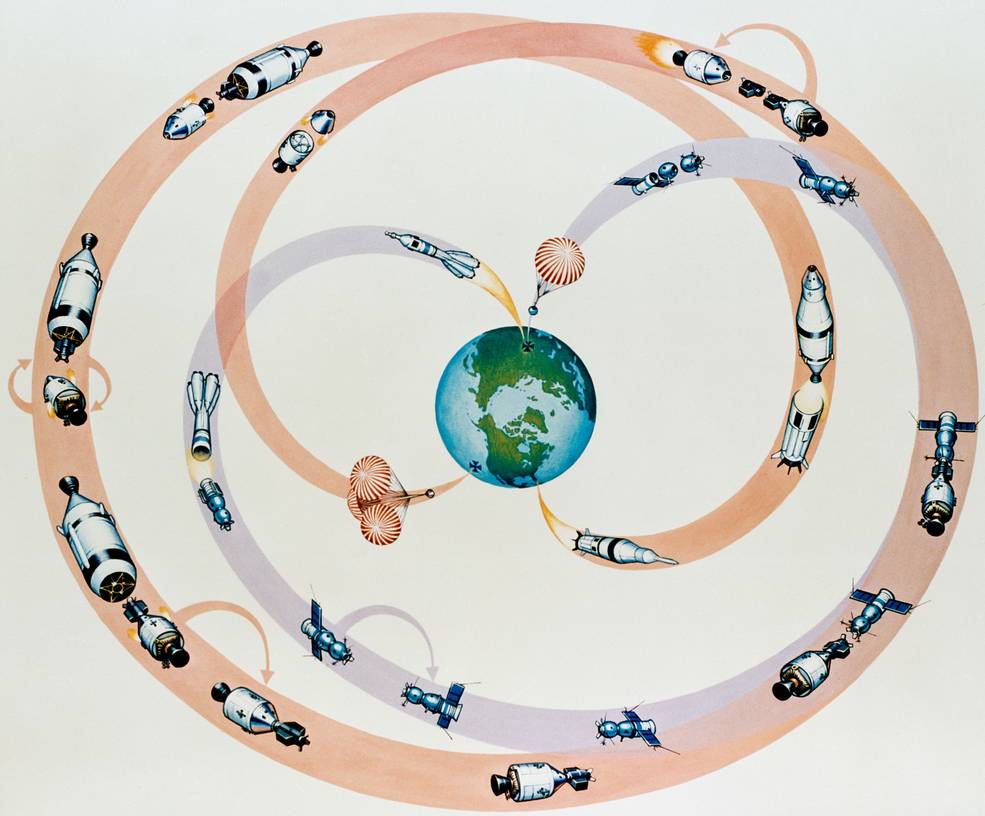
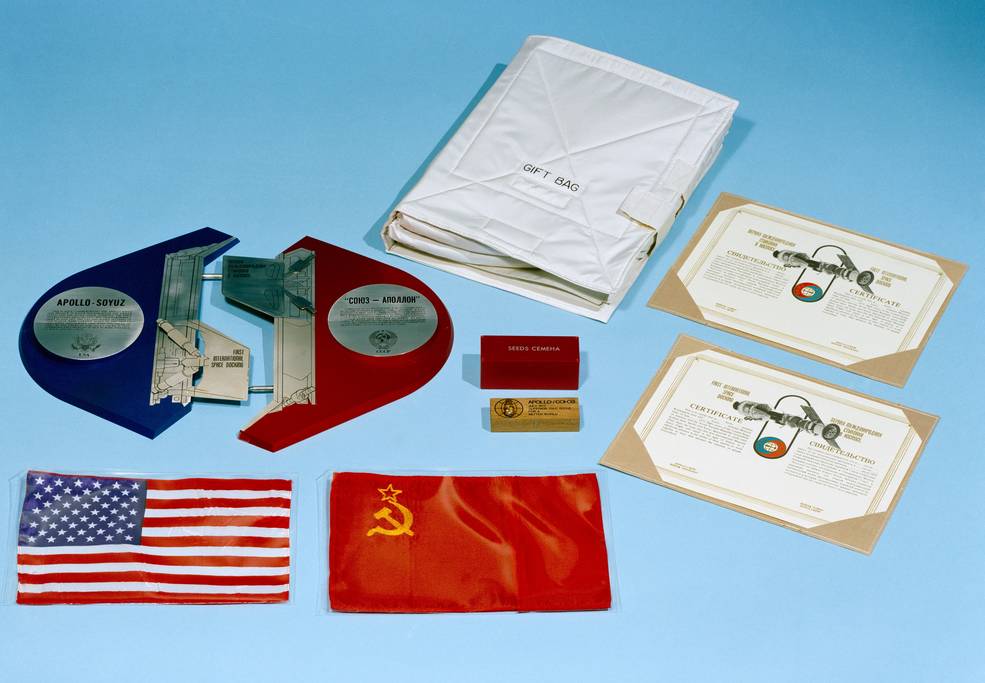
Left: Schematic overview of the ASTP mission. Right: Ceremonial exchange gifts.
After two days of joint operations and multiple crew visits, the two craft would separate and Apollo would try to create an artificial solar eclipse as viewed from Soyuz. Then Soyuz would practice docking as the active spacecraft before the two spacecraft undocked for the final time. Soyuz would remain in orbit for two more days before reentering and landing in Kazakhstan while Apollo continued to conduct science experiments for five more days before making a splashdown in the Pacific Ocean.
To be continued…
John Uri
NASA Johnson Space Center

























